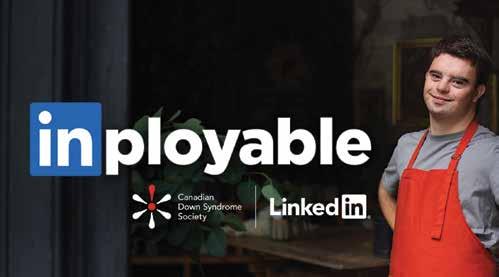
3 minute read
ARE BRANDS GETTING THE MEDIA INVESTMENT INFO THEY NEED TO
BE INCLUSIVE?
By Mike Connell
We know inclusivity and representation are good for society – and good for business. So why isn’t foundational and representational change happening faster?
That’s a question being posed by Sarah Thompson, president of Dentsu Media Canada. “Top-down, there is a general need for CMOs to start addressing what they believe is a responsible advertising playbook,” she says – a need to align values around sustainability and inclusivity with marketing and advertising policies that go beyond so-called care washing.
“This is the month for care-washing where you throw on a rainbow logo and all of a sudden you’re supporting the LGBTQ community,” she adds. “You’re going to get called out for that.”

So, why the slow progress? Well, like all good marketing solutions, it comes down to access and authenticity. Brands needs to be in the spaces in which communities gather, and support the channels and platforms that meaningfully speak to them. But what if we have blind spots we’re not even aware of? Says Thompson, “A majority of planners don’t know what data is missing when planning out investment strategies and approaches.”
Case in point: Indigenous audiences. It’s a cohort that now accounts for about 5% of the Canadian population. According to StatsCan, the Indigenous population grew by 9.4% from 2016 to 2021, surpassing the growth of non-Indigenous Canadians (+5.3%). There are now more than one million First Nations people living in Canada, and the population living in large urban centres (801,045 people) has grown by 12.5% in that time.

The Aboriginal Peoples Television Network (APTN) is mandatory carriage in Canada – a decision made by the CRTC in 1999 to “recognize the immense value of offering Indigenous perspectives, cultures and languages to Canadian audiences,” says Monika Ille, CEO of APTN.


Yet, despite being on every cable and satellite provider nationwide, Ille says Numeris, the exclusive provider of viewership data for television and radio broadcasters in Canada, “does not offer any means to identify Indigenous viewers, which poses a significant challenge for us in accurately understanding and catering to our target audience.”
And this isn’t a singular challenge, Thompson asserts. “There are 1.5 million new Canadians, and a lot of them are Indian,” she says by way of example. “They don’t have a local media ecosystem, so they’re going to be relying on media from where they are immigrating from, and that makes it very hard for brands to reach those audiences.”
The stats underline the problem. Canada’s population was estimated to be just shy of 40 million at the start of the year, after record population growth of over one million people in 2022 – more than 400,000 of whom were immigrants. It’s the first time in Canadian history that the population grew by that much in a 12-month period. (Canada led the G7 for population growth in 2022, as we have for many years.) Consider, too, that Canada is also now home to approximately one million people in the LGBTQ2+ communities.
So, how do you know any campaign targeting these cohorts is working if audiences aren’t being adequately measured or represented?
“One of the things we have to temper is that notion of evidence,” says Thompson. Fast-moving metrics that you get from other platforms don’t necessarily translate into business outcomes. She adds: “brands want market share or growth,” so if you’re stalling on growth, “it may not be your media or your creative messaging.” Instead, she suggests it might be time to look at who you think you’re talking to and who is included in your media planning – and who’s excluded.
“You’re excluding someone as soon as you start targeting, or using the word ‘target,’ or saying ‘18 to 54,’ or saying ‘moms,’” she suggests. “To what end? Let your media agency determine that. We’ll figure out a way to invest and make sure it does what’s expected while being more inclusive of who is in Canada and who actually represents a business opportunity.”
This is where Thompson says planners and agencies need to start challenging the norm. For example: “Connect with the Indigenous communities, do things that are meaningful, make sure their media is supported and we’re including them in the conversation.
“If we do all of these things, the business outcome will come.”









